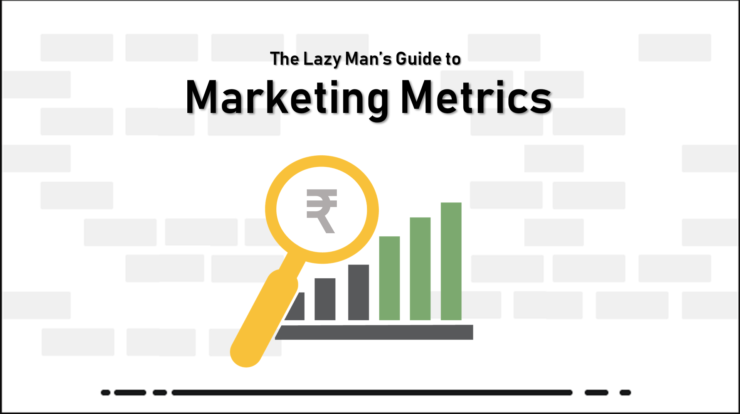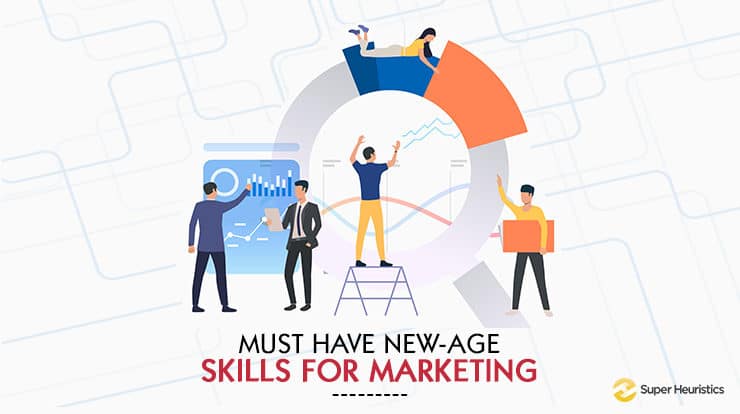
As a marketing student, you have always been taught STP, 4Ps of marketing, branding, digital marketing etc. But apart from these, there is another area very important to every marketer. It is developing a new market offering.
It is an essential part of every company and every marketer's career. You indeed have to do this on your future marketing job. But don't worry if you don't have any idea of developing a new market offering, this article will give you a basic understanding of how to go about it.
I will be explaining the process of developing a new market offering through an example of a project I did during my MBA.
Let me brief you about the project. The project was to develop an entirely new market offering for consumers. The market offering should satisfy the consumers' unsatisfied need.
My team and I decided to offer a farm mechanisation service wherein we will provide machinery and equipment to farmers on rent. The below image summarises the entire New-Product Development Process that I will be explaining in the article with the help of my project.

Source: Marketing Management, Philip Kotler & Kevin Keller
Step 1: Need Analysis & Idea Generation
The first step of developing a new market offering starts with only three things – Ideas! Ideas! Ideas! During the initial stages, the major focus is on idea generation and screening process.
As a marketer, what will you do to decide what will you offer in the market? Simply, you will knock the doors of your consumers! You need to analyse what are the unsatisfied needs of your consumers that you can satisfy. Here are the few ways to get new ideas from your consumers -
- Observe how customers are using your Product – Observing how your customers are using your Product will help you understand the problems they are facing. Not only your Product, you observe any competitor's products and think of how they can be improved.
- Ask customers about their problems with your Product – P&G observed that the consumers are facing issues in saving potato chips after opening the packet. It came up with Pringles that offered potato chips in a big tennis-ball type container. This way, asking customers will help you fill your Product's shortcomings and develop a new market offering.
- Ask customers about their dream products – You can ask your consumers about any product that they want, even if the idea sounds far away from reality.
- Encourage or challenge your customers to change or improve your Product – Cadbury introduced a challenge on Instagram where the consumers had to develop their own flavour of chocolate using the ingredients given by them. This way, it will get to know exactly what new flavours they can introduce.
In the project, my team and I first analysed different sectors and industries where there could be an unsatisfied need. Then we analysed that there exists an unresolved problem of farm mechanisation for the small and marginal farmers.
There is constrained access to modern machinery to farmers. Modern machinery and equipment are very costly and small & marginal farmers could not afford to buy it for their small and fragmented land-holdings.
Step: 2 Concept Development
Till now, we have decided the possible Product that we might offer to the market, which is called a Product Idea. Now, we need to work upon the Product Concept, which is an elaborated version of the expressed idea from the consumer's perspective in developing a new market offering.
Our idea of providing machinery to farmers is a product idea until now, but the consumers don't buy product ideas and buy product concepts.
Since we were offering a service, we first worked on deciding our service providing process's ideation. A group of 7 villages constitutes a cluster. There are office booths located in every cluster.
Whenever a farmer requires machinery, he will call, SMS or through our application. The office receives the order, processes the information, checks whether the machine is available in the farmer's cluster, and accepts the order accordingly.
We will take the machinery on-lease from zamindars and farmers who have them. They are also called as 'Collaborators'.
A few of the questions that one needs to think while developing the concept are - Who will use your product offering? When will consumers buy your product offering? What value will your product offering add for the consumers? Who can be our competitors? Then accordingly, we can modify our concept development stage.
Let us first understand what value our service offering will add before understanding the further aspects of concept development.
Deciding Value-Addition
- Two main entities are there in our service model, Farmers and Collaborators. It is important for you to identify the value-addition for all the important entities involved while developing a new product offering.
- The farmers will get customized cheap and credible machinery support at their doorstep through a convenient and easy booking process. On the other hand, collaborators will get better returns on their investment because their machinery would be either idle or be given to farmers at a lower rate.
Who Will Use Your Product?
- This includes deciding on the target segment for the new product offering. For deciding the specific target segment, you need to do the Segmentation, Targeting and Positioning (STP) for your new product offering.
- In the project on Farm Mechanisation, we fragmented the entire consumer segment based on land-holdings. We targeted marginal & small farmers (up to 2 hectares of land) and medium farmers (2-10 hectares of land).
- Now, there are many marginal & small and medium farmers across the length and breadth of the country, but we could target a particular segment only. So, we decided to target a particular geographical area for the same.
- Convenient machinery renting process, building trust and reliability, modern renting process are the communication objectives followed to position our product offering in our consumers' minds.

Source: expertprogrammanagement
Who Can be Our Competitors?
- You will launch your Product in the market where your product offering's competitors will also be there. Hence, you need to understand who your competitors are, what are their strengths, and how it can affect your product offering. Accordingly, you can modify the product offering at the concept development stage only.
- Since we are providing a farm mechanization service, there are no significantly fewer competitors.
- One of the competitors were zamindars or local machinery provider and the other competitor is Trringo. We tried to understand our competitors' entire service offering mechanism, i.e. What all services they are providing? How are they providing it? At what price they are offering their services? The USP and key features of their offerings etc.
- You also need to understand all the critical aspects of your competitors likewise. After doing this, you will be able to create a product-positioning map for your new product offering.
- It is a visual technique where you can perceptually map your Product's position compared to your competitors. The below image shows how you can position your product offering corresponding to competitors against any two parameters.

Source: blog.alexa
Step 3: Marketing Strategy Development
This step can be initiated by analysing the external environment of the business for developing a new market offering. There are many frameworks for analysing the external environment like PESTEL, 5Cs, Porter's 5 forces etc.
We conducted 5Cs in our marketing project. The below image shows the 5 aspects that cover the components of the external environment. These are Company, Collaborators, Customers, Competitors and Climate (also known as Context). This will give you an in-depth idea of your external environment and help you formulate the strategies.
The name of our farm mechanisation service was decided as 'TracFarm'. Value Proposition, viability, rarity, imitable etc. were the aspects covered in the project for company as a component of 5Cs.
Our collaborators are zamindars and local farmers who will be providing us the machinery. Our customers were the farmers who could not afford to buy machinery. The context component was analysed using the PESTEL framework.

Source: volusion
After this, the marketing mix for your new product offering can be developed using 4Ps (Product, Price, Place, Promotion). In our project, the Product includes the name, i.e., 'TracFarm' and tagline, i.e., 'Khet Pe Bachat'. Apart from that, the value addition to the respective collaborators will also be covered in Product.
Our service's promotion was divided into two parts – one is Message Strategy, i.e., what we wanted to communicate about our brand. The second is Creative Strategy, i.e., how we wanted to say that.
We communicated our service to be affordable, convenient, customized and on-time, and we wanted to communicate the same through TV & radio ads, salesperson and SMS. In place component, we decided to lease our machinery from the collaborators, after booking the order will be completed by our experienced drivers. The price component covered price value (INR 399) and price structure (coupons/discounts).
Till now, almost half of the work for introducing a new product offering is done. We can move on to the next step of Business analysis in the new-product development process.
Step 4: Business Analysis
After deciding the product concept and marketing strategy, the next step is to evaluate the offering's business attractiveness in developing a new market offering. This includes preparing sales, cost and profit projections and then aligning them with the firm's objectives.
- Estimating Total Sales – This will include estimating the sum of estimated first-time sales and repeat sales. The estimation method will depend upon the product offering's nature; whether it is purchased once (engagement ring, retirement house), infrequently or frequently. The one-time purchased products' life-cycle sales graph rises at a faster pace and then falls (a); similarly, the sales projections for these three types of products will depend upon their Product life-cycle sales.

Source: slideplayer
Since we are providing a rental service to the farmers, it will fall under the third category of products, i.e. frequently purchased product.
- Estimating Costs and Profits – The next step includes making projected cash flow statements and P&L. The costs will be estimated by the R&D, manufacturing, marketing and finance departments of the company.
Step 5: Development to Commercialization
This step will include the various kinds of tests conducted before the commercialization of the new product offering while developing a new market offering. The several tests conducted are: -
- Customer Tests – Before entering the marketplace, new product offerings are put through rigorous functional and customer tests. The firm first tests the Product within the organisation known as Alpha Testing. Then the Product is tested with the actual consumers known as the Beta Testing.
- Market Testing – The various market testing methods are Simulated Test Marketing; a few of the consumers buy the Product in the simulated market conditions; Controlled Test Marketing; it is restricted to a number of stores and restricted locations.
I hope you have understood how to tests the products while developing a new product offering. Now, we can discuss Commercialisation.
After the Product has been tested, it is now ready to enter into the market, this process of entering the new product offering into the market is known as Commercialisation. This includes the highest cost of the company to date. The important decisions that need to be taken under it are-
- When (Timing)
- Where (Geographic Strategy)
- To Whom (Target-Market Prospects)
- How (Introductory Market Strategy)
You need to ponder all of these aspects under commercialisation: When do you want to enter your Product into the marketplace – First entry, Parallel entry or Late entry. At which location you want to roll out your Product etc.
I hope by now you have got a fair idea of how to introduce new product offering. All of the steps are crucial and important for developing a new product offering successfully into the marketplace.
Conclusion
- Developing a new market offering starts with Need Analysis and Idea Generation. You can gather ideas from your consumers by observing how they are using your product, asking about their dream products, asking what the problems they are facing are.
- The next step is the concept development stage. The consumers do not buy the idea; they buy the concepts. Hence, this step is focused upon ideation of the product offering.
- The concept development stage includes deciding value-addition, Competitor analysis and STP of the new product offering.
- Marketing Strategy Development stage includes analysing the external environment and deciding on the new product offering's concrete strategies. This can also be done using 5Cs and 4Ps.
- After this, total sales, costs and profits are estimated under Business Analysis Stage.
- After the development, testing is of the new product offering is a must and then finally the new product offering is commercialised.







